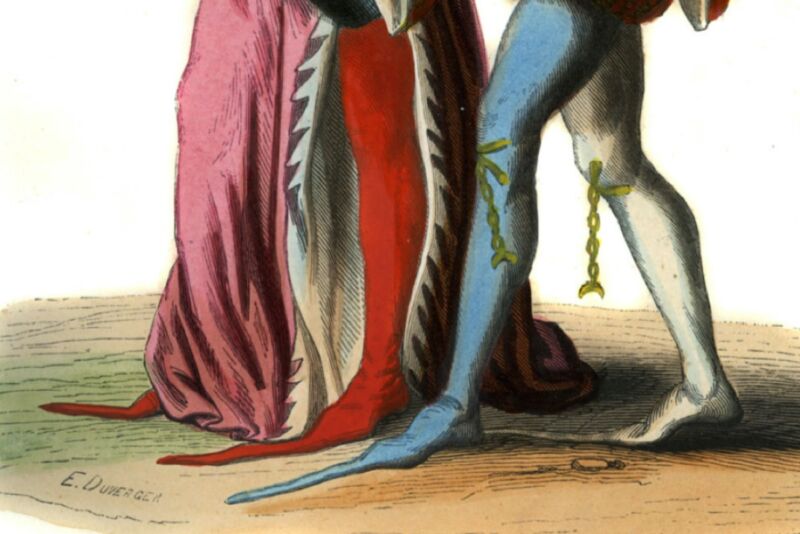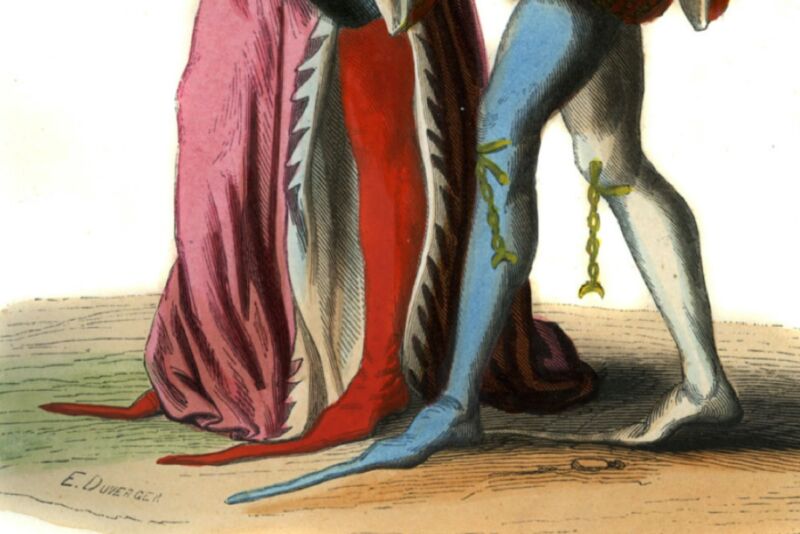
Enlarge / Detail showing fashionable pointed shoes of two English courtiers of Richard II, 14th century. One has two different colored shoes and chains hanging from his knees, gold necklace. Hand-painted copy of 14th-century art (c. 1847). (credit: Culture Club / Getty Images)
As many as one in three Americans suffer from bunions, those painful bumps that form on the outside of the big toe. Wearing ill-fitting shoes that cramp the toes, or high heels, can make the pain even worse, since they increase pressure on the big toe joint. That doesn’t deter people from wearing them, however. It’s a well-established maxim that sometimes one must suffer in order to be fashionable.
According to a recent study published in the International Journal of Paleopathology, people in the European Middle Ages also suffered in the name of fashion—in this case, shoes with exaggerated pointed toes. University of Cambridge archaeologists studied skeletal remains excavated from Cambridge and found evidence that bunions were far more prevalent in remains from the 14th and 15th centuries than in those from earlier centuries, when more pragmatic footwear was popular. This may, in turn, have increased the risk of suffering fractures from falls.
“We were quite fortunate that we happened to be studying a time period where there was a clear change in shoe fashion somewhere in the middle of our sample,” co-author Piers Mitchell told The Guardian. “People really did wear ridiculously long, pointy shoes, just like they did in [the] Blackadder [TV series].” (You can see series star Rowan Atkinson sporting such shoes below and in this clip from the S1 episode “Born to Be King.”)





